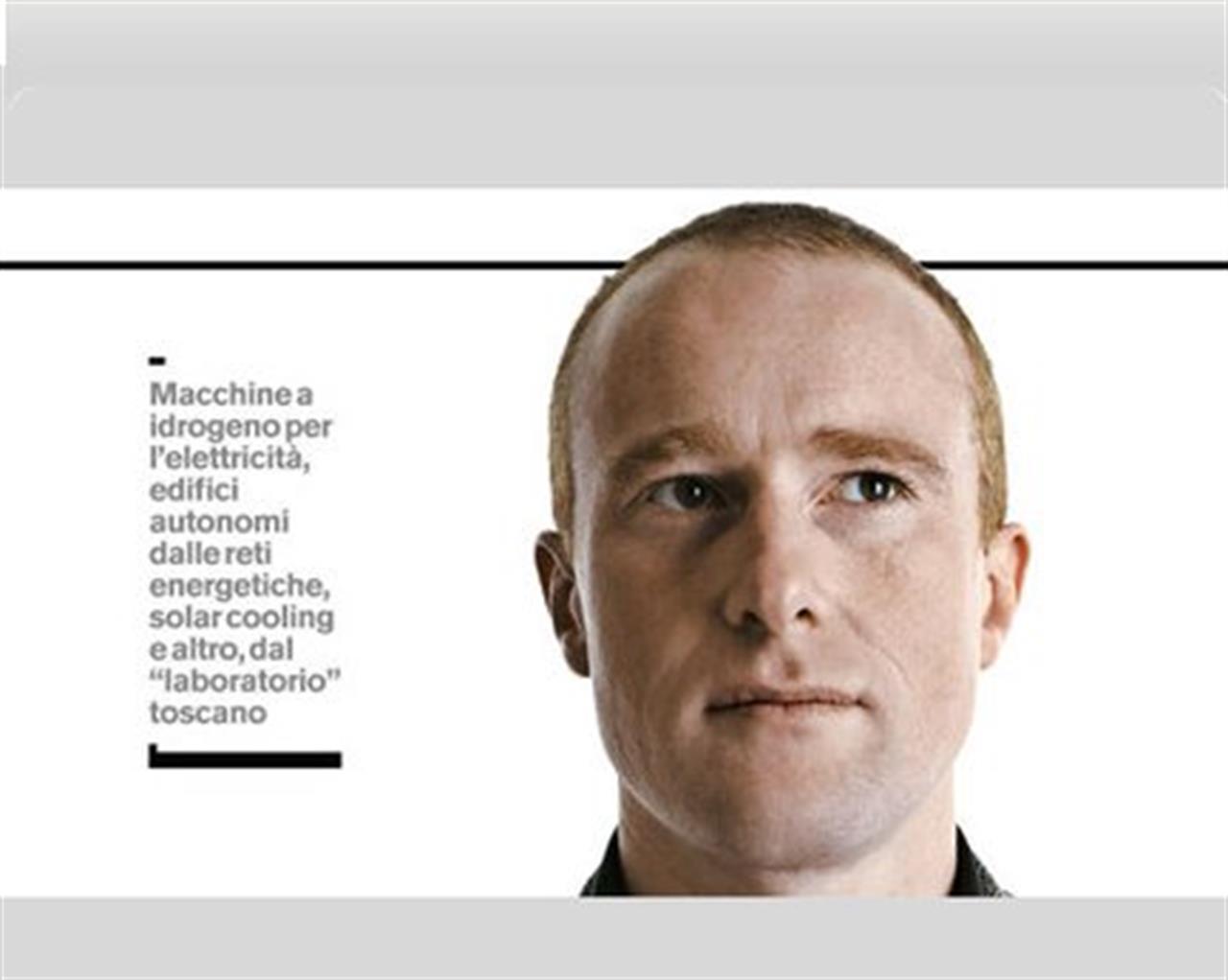Sostenibilità
The sun factory
Interview with Emiliano Cecchini who is leading Italy's "off the grid revolution"

Milan’s fringe furniture fair tends to attract a strange bunch of people but Emiliano Cecchini is tall, good looking and well dressed and the only thing that strikes as being odd (other than his bright red hair and freckles) is that he isn’t a young designer but a physicist.
The more you speak to him the more you realise that Cecchini is about as unconventional as they come. And yet his idea – to build off the grid houses, hotels, offices and perhaps one day whole villages – makes perfect sense. Living off the grid means not being connected to gas pipes, electrical cables, water pipes and even telephone lines. It also means having no bills. But can it be done? More to the point, especially during design week, can it be done in style?
Predictably, Cecchini’s answer is that it can and he has both the pictures and a case study to prove it. In the early 2000’s the local authority of his home town, Arezzo, in Tuscany, gave him as his team of researchers a building to use as their laboratory – then, as now, they were interested in investigating the potential for using hydrogen as an alternative fuel to electricity and gas. The only problem with the building was that it was in the middle of nowhere and completely off the grid. Lacking the funds to put the lab on the grid – and because every good innovator never misses the chance of turning adversity into advantage, Cecchini and his team decided to make theirs the world’s first off the grid research laboratory.
Today the HydroLab, which is just one of the projects being carried out by the cooperative Cecchini works for, aptly called the Sunshine Factory (www.fabbricadelsole.it), is up and running and he says they have never looked back. “Not only have we never spent a penny for either gas or electric, we have also become much more aware of our environmental footprint on the earth.”
I recently calculated my environmental footprint and was shocked to discover it averaged at around 4.2 global hectares (42 square kilometres). In other words, it means that if everyone in the world lived, ate and kept themselves warm like I do it would take the world two and a half years to regenerate the resources consumed. And I don’t own a car, hardly eat meat and recycle all my plastic and paper.
“When each and every of your energetic needs are produced in the building you live in and 90 per cent of your waste is dealt with on site, you start getting smart about what you use, when you use it and what you throw down the toilet,” says Cecchini with a disarming smile. “To be blunt if you’re throwing bleach down the drain you’re likely to be eating bleach salad for lunch”, he adds by way of explanation.
The HydroLab recycles all of its water, including sewage, with an ingenious network of sand, gravel and plant root filters. And even though the water may not be drinkable, it can still be used to flush the toilet, wash your clothes and clean your house.
The real innovation that Cecchini and the other HydroLab researchers have come up with, however, is hydrogen. In Arezzo, which has been dubbed as the “golden district” for its high concentration of gold producers, there is plenty of hydrogen as it is used (up to 5 metres cubed per hour) in gold jewellery making. But it wasn’t until Cecchini ended up off the grid that he decided to start experimenting with hydrogen in the kitchen. Not as food but as fuel. “Methane is far more efficient that hydrogen, but hydrogen can be made quite easily at home by separating the oxygen and hydrogen molecules in water whereas methane has to be pumped all the way from Libya or Russia. Using hydrogen make more sense logistically, not to mention all the wars that could be avoided if each nation were able to produce its own energy.”
The point Cecchini makes is an important one, so important that his project recently sparked the interest of the American Ambassador to Italy. “He wasn’t interested in the environmental benefits as much as the security ones,” explains Cecchini. Because being off the grid means that in a black out, you don’t black out.
I would like to argue that off the grid homes are good because they reduce the impact those who live in them have on the earth. But Cecchini says that people are more interested in them for their potential to reduce monthly bills and keep the family safe in case of national disaster (remember nuclear bunkers?). Will fear alone manage to drive Cecchini’s dream of building an off the grid village? “I think there is a lot of fear in the world today and I think people are right in being scared. Every animal has its habitat, we are the only creatures on earth that expect to live everywhere. Perhaps it is time we started thinking seriously about where and how we are living. But one thing is for sure: I will never give up!”.
Nessuno ti regala niente, noi sì
Hai letto questo articolo liberamente, senza essere bloccato dopo le prime righe. Ti è piaciuto? L’hai trovato interessante e utile? Gli articoli online di VITA sono in larga parte accessibili gratuitamente. Ci teniamo sia così per sempre, perché l’informazione è un diritto di tutti. E possiamo farlo grazie al supporto di chi si abbona.
